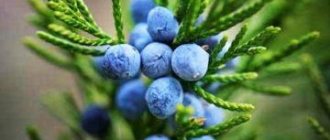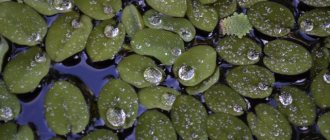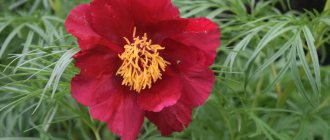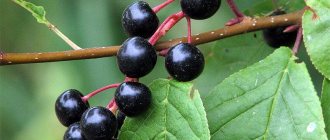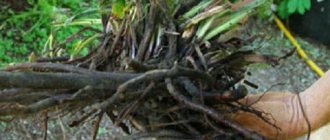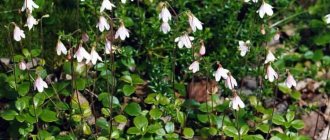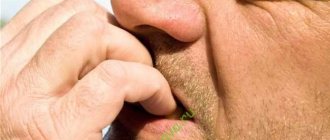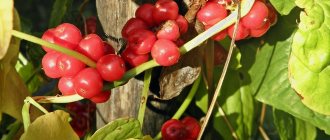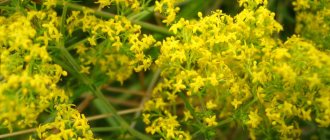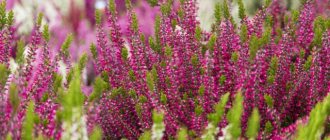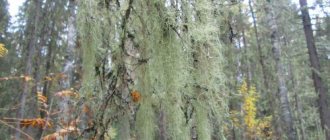Siberians are well acquainted with shiksha , a fluffy carpet covering swampy places. Its black berries sit in dense clusters on soft branches - “Christmas trees”. The taste of shiksha is inferior to lingonberries and blueberries, and therefore does not belong to the category of commercial berries. But in terms of its medicinal properties, it is difficult to find a worthy replacement.
Shiksha can be called a record holder for the number of popular names. In addition to the familiar name “crowberry”, it is called “crowberry” - for the black color of the berries, “sykhoy” - for its diuretic effect, “psycho” - for its calming effect, “purple” - for its bright flowers. The love of wild animals for this grass is about and “pork blueberry”.
Traditional healers of Siberia highly value shiksha, using it to treat a variety of ailments. It was they who nicknamed it “dear grass.” Let us also take a closer look at this priceless “green treasure” in order to bring its healing power to our aid at the right time.
Biological composition and medicinal properties of shiksha herb
Shiksha contains many biologically active substances. In addition to three very important flavonoids - rutin, quercetin and kaempferol , saponins, urosolic acid, anthocyanins, essential and fatty oils are found in this plant. Shiksha leaves are rich in alkaloids, coumarins and caffeic acid. They contain vitamins A, C and manganese - a trace element that is extremely important for the health of the nervous system .
Acting together, the biocomponents of this plant have a versatile therapeutic effect on the body. First of all, it is necessary to note the good anticonvulsant effect of drugs based on shiksha. Therefore, they are used to treat epileptic . Crowberry perfectly calms the nerves, relieves headaches and can fully replace the synthetic drugs we are used to. It eliminates the destructive effects of stress, improves sleep, restores memory and treats brain diseases . Shiksha will provide real help to everyone who suffers from migraine attacks and nervous exhaustion!
There are few medicinal herbs that, like shiksha, are used to eliminate drug and alcohol addiction and relieve manic-depressive syndrome.
If crowberry appears in your home medicine cabinet, then you will not need other diuretic and antiseptic medications. Hypertensive patients will also find this herb very useful, as it gently and reliably lowers blood pressure . Metabolic disorders, edema (dropsy), pyelonephritis and cystitis are also effectively treated with dropsy preparations.
Dysentery and diarrhea, colitis and gastritis recede before the healing power of this plant. In ancient recipes of Tibetan medicine, shiksha appears as a remedy for the treatment of scurvy, liver diseases and anthrax.
An aqueous infusion of this herb is useful for anyone who suffers from glaucoma, cataracts, or spends a lot of time at the computer ( dry eye syndrome ).
Shiksha decoction is an excellent drug for strengthening the immune system and restoring the body after a debilitating illness. In addition to internal use, shiksha water decoctions can be used as a healing additive in baths.
Shiksha berry jam
You can make amazing jam from shiksha berries, but this taste can be best experienced with the addition of apples.
To do this, apples are peeled and chopped, then dipped in boiled water and boiled until soft. Then everything is cooled and mixed using a blender, that is, applesauce is obtained.
The berries are washed and granulated sugar is added to them, then everything is left alone for about an hour. Applesauce and berries are combined together and this mixture is put on fire. After the boil starts, cook everything for five minutes, this way more vitamins will be preserved. The finished jam is put into jars and rolled up under metal lids; this method will help preserve the vitamins and fresh taste of the berries.
Products are taken at the rate of 1 kg of apples, a kilogram of berries, and this mass is 1.5 kg of granulated sugar. This is a wonderful addition to pancakes and other delicious dishes, and can be used as a filling and decoration for cakes. Store for no more than two years in a dark and cool place.
Source
Other articles on the topic “Benefits and harms of berries”
The benefits and harms of watermelon, medicinal properties
Properties of raspberries, health benefits and harms
Camu Camu berries - beneficial properties and contraindications
Useful properties and contraindications of blueberry leaves and berries
Medicinal use
Due to its beneficial properties, shiksha grass has found wide use in the treatment of various ailments.
- Infusion for headaches: pour half a glass of boiling water over crowberry leaves and shoots (2 tablespoons) for 25-30 minutes under the lid. Filter, dilute 20 ml of infusion in 100 ml of clean water. They drink three or four times a day.
- To improve metabolism and lower blood pressure: boil a tablespoon of chopped crowberry leafy shoots in half a liter of water for 10 minutes. Filtered. Drink 20 ml every 4 hours for two days in a row. You can repeat it every other day.
- For nephritis, inflammation of the renal pelvis, to relieve swelling: bring 3 tbsp to a boil. spoons of finely chopped crowberry leaf in a liter of water, remove from heat. Strain after 10 minutes. Drink a glass of infusion in the morning on an empty stomach.
- Extract for a tonic, soothing bath: simmer in 6 liters of boiling water under a lid, insulating it, 50 grams of dry crowberry leaves and shoots for 12 hours. Pure infusion is poured into bath water (water temperature 36-38°C). The procedure takes no longer than 40 minutes, and should be done every other day or two for a month.
- Treatment of depression, neurosis, epilepsy: boil 3 tablespoons of dry crowberry herb in 1 liter of water for 10 minutes. Pour into a thermos for 1.5-2 hours, cool, squeeze out the cake. Drink 20 ml, diluted in a glass of water, morning and evening.
- Strengthening the immune system, scurvy, dysentery: it is recommended to eat the fruits of the plant (fresh, dry, frozen) every day, 150-200 grams.
- Drops for the treatment of eye diseases: simmer 1 tablespoon of raw material in 50 ml of boiling water until completely cooled. Squeeze out the pulp and filter the infusion. 2 drops of herbal infusion are dripped into each eye 6 times a day for 4 weeks. For eye fatigue, the procedure is carried out within a week.
- Treatment of dermatitis, skin rashes, inflammations: boil 5 tbsp. spoons of crowberry leaves in a glass of water for 10 minutes. A gauze cloth soaked in a clean broth is applied to the affected area. If furunculosis is being treated, the cake is wrapped in a gauze cloth and applied warm to the boil.
- Strengthening hair roots, against dandruff: rinse clean hair with a strained infusion of 4 tablespoons of raven's eye in 0.5 liters of boiling water (60 minutes).
Planting and caring for shiksha
Planting shiksha in the garden
In nature, crowberry most often grows in well-lit places, in moist peat or sandy acidic soil. The plant does not tolerate stagnant water and too dense soils, so peat, sand and turf soil must be added to the clay soil. They do it this way: the top layer of soil is removed, a layer of crushed stone with sand 10 cm thick is laid in the vacant area, and then the top layer of soil, mixed with the necessary additives, is laid in place.
The planting depth for crowberry is 40 cm. In a row, seedlings are placed at a distance of 30-50 cm from each other. Curtains are planted in such a way that the root collar is buried 2 cm. After planting, the bed with crowberries is watered.
How to care for shiksha
In the first years of its life, the shiksha requires regular weeding, but as soon as it grows, it will be able to suppress any weeds on its own. Mulching the area with a five-centimeter layer of peat will help you reduce the labor intensity of this procedure and prevent the rapid evaporation of moisture from the soil. Since the plant cannot tolerate excess moisture, crowberry is watered infrequently, only in dry weather.
Once during the season, crowberry is fed with Nitroammophoska at the rate of 50 g of fertilizer per 1 m² of bed. In the spring, crowed shrub is pruned, removing only dry and frozen shoots. Keep in mind that crowberry grows very slowly, so pruning must be done carefully. For the winter, crowberries are not covered, since they are quite winter-hardy and tolerate frosts well under snow cover. In a snowless winter, it is better to cover the area with spruce branches.
Related article: Potash fertilizers: application and application, types
Features of crowberry
Crowberry is a creeping small shrub that reaches only 20 centimeters in height. The length of the stems can reach 1 meter. This plant is similar in characteristics to lingonberries. This shrub grows in clumps, while its branches can grow adventitious roots, due to which the clump constantly grows, while the branches located in the middle of the bush gradually die off. Strongly branching shoots are dark brown. Alternately arranged leathery leaf plates are similar in appearance to spruce needles; they densely cover the shoots. Each of the leaf plates does not fall off the bush for 5 years. Axillary flowers have 3 petals, which can be colored red, purple or pink. These flowers are inconspicuous. In mid-latitudes, shiksha blooms in April or May, while in Siberia - in May or June. For pollination, such shrubs require pollinating insects, such as bees, butterflies and flies. Externally, shiksha berries are similar to blueberries. They are juicy, sour fruits, spherical in shape and black in color, which can reach 5.5 cm in diameter, have 4 seeds inside, and a bluish coating on the surface. They begin to ripen in August, and they do not fall off the bushes throughout the winter. The juice obtained from such fruits is purple in color. Thickets of crowberry are called shikshevnik or crowberry.
Article on the topic: How to fertilize flowers - homemade, folk and chemical fertilizers. When not to fertilize flowers
This plant is also distinguished by another feature: it grows in symbiosis with a special fungus. It settles in the root system of the bush and supplies it with photosynthetic products.
Description of shiksha
The crowberry plant, also called crowberry or crowberry, belongs to the Heather family and grows in many countries - Russia, England, America, Iceland, Japan. In the Russian Federation, the plant is distributed mainly in Siberia, Altai and the Far East.
The northern shiksha berry slightly resembles a blueberry
Shiksha looks like a creeping plant, usually not exceeding 30 cm in height, and can stretch up to 1 m in length. Its branches are thin, brown, covered with small dark hairs and small needle-like leaves. In August, the plant bears fruit - small dark berries that resemble blueberries. They shiksha are covered with a dense and thick skin, and there is very little pulp in them. But crowberry produces abundant purple juice, which is why it is called crowberry.
Types of shiksha
There is still debate in the scientific community regarding the varieties of shiksha. Some scientists are of the opinion that the genus contains only one species - black crowberry, or chokeberry. And this species is divided into 2 varieties: Asian crowberry and Japanese crowberry.
According to other data, despite the strong external similarity, there are 5 types of shiksha:
- bisexual - a herb with black berries and dark green leaves;
The leaves are unusually bright
- black - grass with black berries and yellow-green leaves;
The black berries of this shiksha have a matte finish.
- almost-holarctic - with black berries;
The variety is distinguished by rather large berries
- red - the plant bears red, sometimes black fruits;
Externally, the berries of the variety resemble lingonberries
- red-fruited, like red, is characterized by red berries.
The red-fruited shiksha, unlike the simple red one, does not have black berries on the bush
Important! All types of crowberry have medicinal properties. However, crowberry black is most often used for treatment. It is the most widespread, and if desired, it can even be grown in a garden plot.
Black crowberry is the most common - accordingly, it is used more often in treatment
